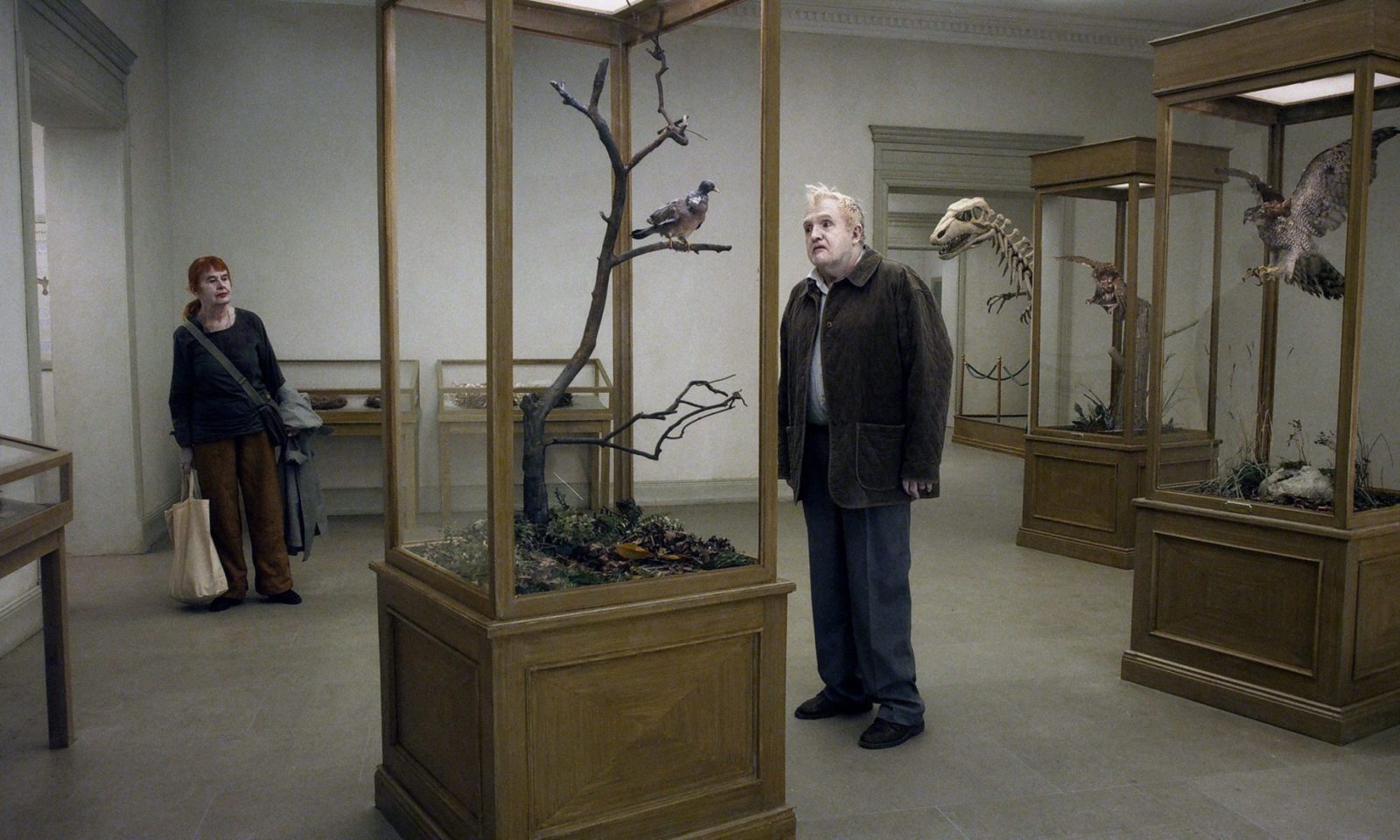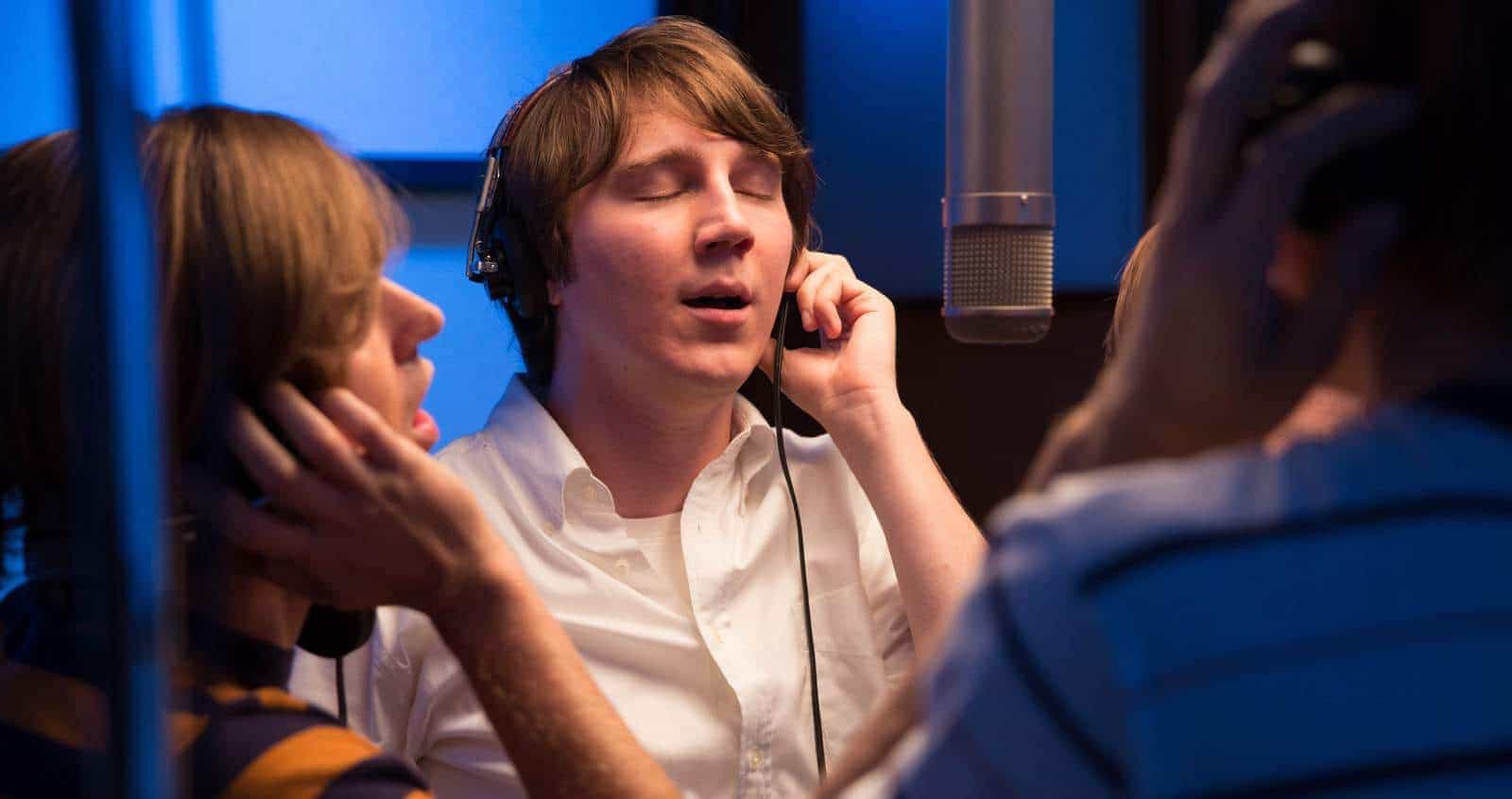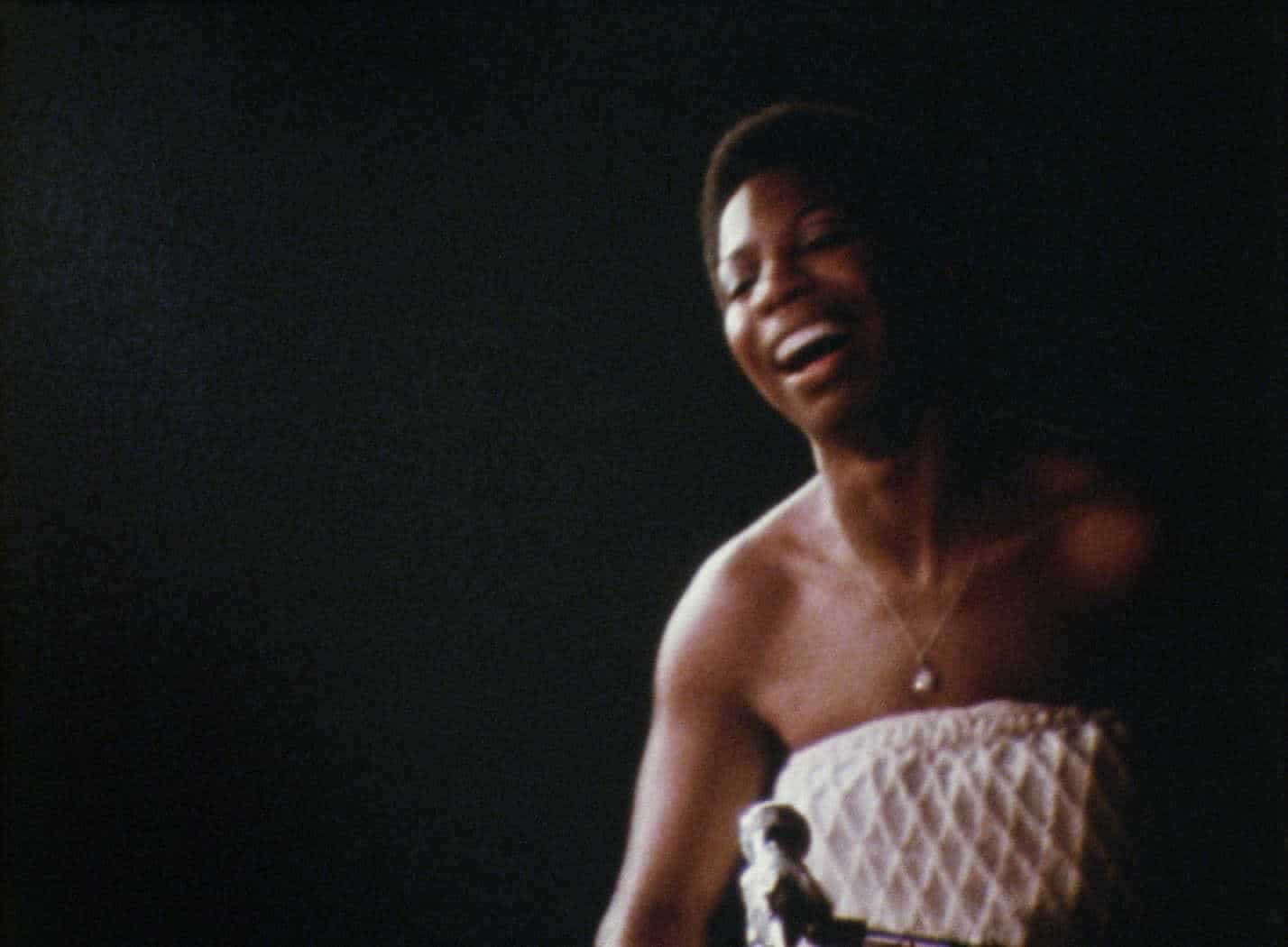
Roy Andersson’s final installment in his trilogy about being a human being (You, The Living and Songs from the Second Floor), A Pigeon Sat on a Branch Reflecting on Existence, begins with a comedic bang of twisted humour: a series of three vignettes that detail “meetings with death.” In my favourite one, we find two middle-aged siblings sitting around the hospital bed of their sick and dying mother, who is clutching her handbag containing her valuables, believing she can take it with her to heaven.
When the third sibling arrives, and the nurse informs the family they can leave for the evening, he reasons that they can’t just leave her there with her handbag. The others nonchalantly dare him to try to separate her from it. Each time he tugs on the bag, the seemingly unconscious woman lets out a loud moan of displeasure, clutching ever harder. As her son pulls harder and harder, he ends up inadvertently rolling her hospital bed around the room.
Filming each scene in a single, still long-shot, with a fixed camera, Andersson blocks his actors so meticulously that it feels like watching great theatre unfold on screen. The sets, all drained of colour and dreary, were custom built for the film, and Andersson put his actors in makeup that made them look particularly pale and ghostly. In one of the opening vignettes, a man is found dead on a ferry, while ferry employees circle around him each at different levels — one standing behind, one kneeling in front— and passengers look on from a distance. It’s a perfectly orchestrated tableau. It allows us to stand back from the action, detached, to find the humour and absurdity in the situation.
But as the film progresses, it becomes increasingly harder to laugh at the misfortune of the people on screen. We start to spend more and more time with our two main characters, traveling salesman who pedal party props: extra long vampire teeth, a laughing bag that makes a sound so eerie when it echoes in a silent room, and a hideous Uncle One-Tooth mask, which provokes one passerby to run away screaming in terror. The more we learn about them, the more we see their lives are full of loneliness, disappointment, and boredom. Their scenes begin to evoke a melancholic air, pushing us to reflect rather than simply gawk and laugh at them. They’re having trouble making sales and paying their debts. Instead of taking comfort in one another, they argue and bicker. They can barely even find an audience to listen to their sales pitch.
Andersson presents a world indifferent to the pain and suffering of others. What starts off as a running joke, that almost every character has a phone conversation in which they dispassionately declare “I’m happy to hear that you’re doing fine,” eventually becomes quite sad. No one is paying much attention to anyone else, and it’s not an uncommon occurrence for someone to pour their heart out to an empty room or an audience that’s barely listening.
In the film’s most surreal scene, an 18th century king, Karl XII, bursts into a bar on the outskirts of Götenburg on horseback in search of a drink before heading into battle in Russia. His servants throw out all of the women and casually whip standersby for no apparent reason. The other patrons and the owners merely watch, more flabbergasted than horrified. They do nothing to interfere. It’s so bizarre it’s funny, but the more you sit with it, the more unsettling it becomes. Later in the film, we return to the same bar, where newly widowed women are sobbing and the army can be seen returning in the background, through the back window, hobbling and disheveled from defeat. Andersson’s depictions of casual cruelty culminate in a final scene so disturbing that it will make you rethink your response to everything that’s come before. It might just be a dream, but it feels all too real after what’s come before.
Since the film consists of a series of sketches, loosely tied together by the salesmen who interact with many of the other characters we encounter, you never quite know what to expect next. It’s fresh and engaging, and it keeps you guessing. You may sense how the mood and tone are changing, but the rest is a discovery. You start to see connections between the scenes and the characters’ loneliness.
Most surprising of all may be how well the music is chosen and used. In a flashback to the 1940s in a local pub, we’re treated to a musical number. A scene in a dance class near the beginning involves beautiful choreography and a hands-y teacher infatuated with her uninterested student. These bring joy, beauty, and order into this world that can so often seem doomed. With just a few key tunes, you’ll find them implanted in your brain in no time, for they’re used so well.
I first saw the film at the Toronto International Film Festival last September, where it was a critical hit. At first look, it didn’t all seem to hang together, but there was no denying that days later, I was still quoting from it, still laughing spontaneously at its best scenes, and still haunted by its most disturbing. Those images made a permanent imprint on my mind. It only improves on rewatch, revealing new layers and connections, until you’re forced to admit, despite any initial revelations, that it’s simply divine. Visually audacious and stunning and expertly crafted, the film is a rare gift, especially in the midst of all the summer blockbusters. Despite winning the top prize at the Venice Film Festival last September, it’s only getting a limited release in North America. If it’s coming to a theatre near you, drop whatever you’re doing and go before it disappears. You’ll be back in a few days with friends in tow.


